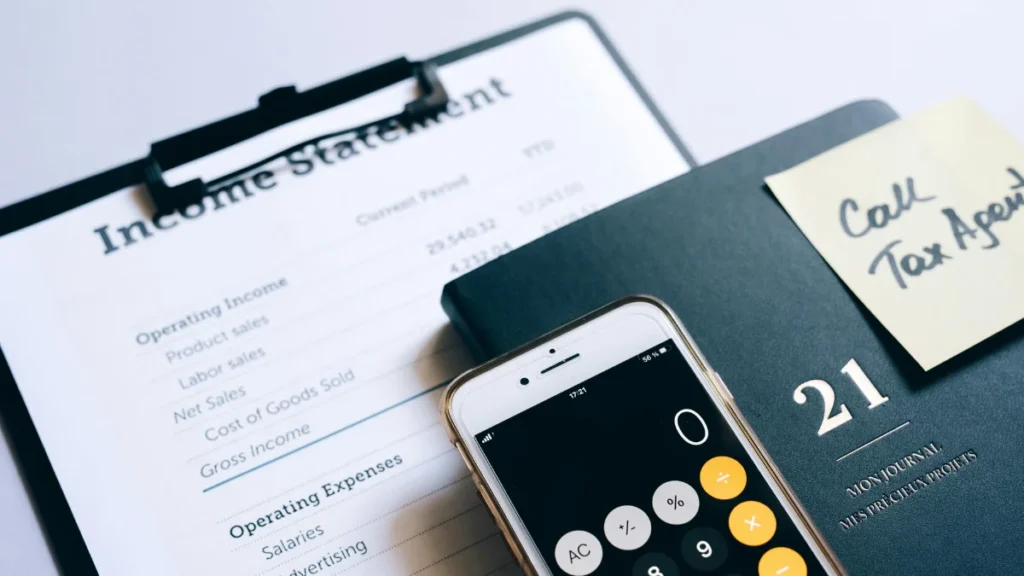Financial statements are those statements that provide information about the profitability and the financial position of a business. Here are the financial statements of sole proprietorship class 11 notes.
The term financial statements includes at least two statements that are:
1) Balance Sheet
2) Trading and Profit and Loss A/c
The primary objective of financial statements is to communicate meaningful information to different stakeholders in the business so that they can make informed decisions.
Topics Discussed
Income Statement

It is divided into two parts:
1) The first part is called ‘Trading account‘. It shows the gross profit or gross loss.
2) The second part is called the ‘Profit and Loss account‘. It shows the net profit or net loss.
Trading Account
A trading account is one of the financial statements that shows the result of the buying and selling of goods and services of an accounting period.
Gross Profit: It is the excess of the selling price of the goods over the cost of goods sold.
Profit and Loss Account
It shows the overall results of business operations i.e. net profit earned or net loss incurred during an accounting period.
Net Profit: Net profit means the excess of all revenue over all expenses and losses of a business enterprise.
Profit
- Cost of goods sold = Opening stock + purchases + direct expenses – closing stock
- Gross Profit = Sales – Cost of goods sold
- Adjusted Purchases = Opening stock + purchases – closing stock
Direct Expenses
All the expenses covered under the trading account are called direct expenses. In other words, expenses related to production activities in the factory are direct expenses like wages of laborers, cost of raw materials, power cost, etc.
Remember carriage inwards is a direct expense whereas carriage outwards is an example of an indirect expense.
Similarly, wages and salaries come under direct expenses and the opposite, salaries and wages come under indirect expenses.
Expenses related to the office are indirect expenses like salaries of employees, stationary expenses, etc.
Format of Trading Account
| Particulars | Amt. (Rs.) | Particulars | Amt. (Rs.) |
| Opening stock | x | Sales: xx -sales return: (x) | x |
| Purchase: xx -purchase return: (x) | x | Closing stock | x |
| Direct expense | x | G/L c/d | x |
| G/P c/d (Gross profit) | x | ||
| TOTAL | xx | xx |
The trading account relates to the following types of expenses and incomes.
1) Related to factory
2) Related to purchase
3) Inward expenses
4) Manufacturing related expenses
Format of Profit and Loss Account
| Particulars | Amount (Rs.) | Particulars | Amount (Rs.) |
| G/L b/d | x | G/P b/d | x |
| Indirect expenses | x | Indirect income | x |
| Net profit | x | Net loss | x |
| TOTAL | xx | xx |
Operating Profit = Net Profit – Non operating income + Non operating expenses
Financial Statements with Adjustments Notes
Profit and loss A/c records all the indirect expenses and indirect incomes which include:
1) Office expenses
2) Expenses on Sale
3) Outward Expense
4) Others
Balance Sheet

It refers to a statement of assets and liabilities of an enterprise on a certain fixed date. There are two methods of making a balance sheet:
a) In the order of permanence
b) In the order of liquidity
Important things related to Balance Sheet
- If nothing is given in the questions, this order of liquidity is given more preference.
- Drawings/Net loss will be shown on the liability side of the balance sheet as the deduction from the capital.
- Net profit and additional capital will be added to the capital.
- If closing stock is not shown in the adjustment, it will only be recorded in the balance sheet.
Difference between Trial Balance and Balance Sheet
| Basis | Trial Balance | Balance Sheet |
| Object | It is prepared to check the arithmetical accuracy. | It is prepared to know the financial position of the business. |
| Headings | There are two columns debit and credit. | The heading is of two sides, assets and liabilities. |
| Necessity | Through desirable, it is not necessary. | It is necessary to prepare a balance sheet. |
This was all about Financial Statements of Sole Proprietorship Class 11 Notes. If you have any doubts, you can either join my telegram channel or ask those doubts in the comments section.
[…] Financial Statements of a Sole Proprietor Notes […]